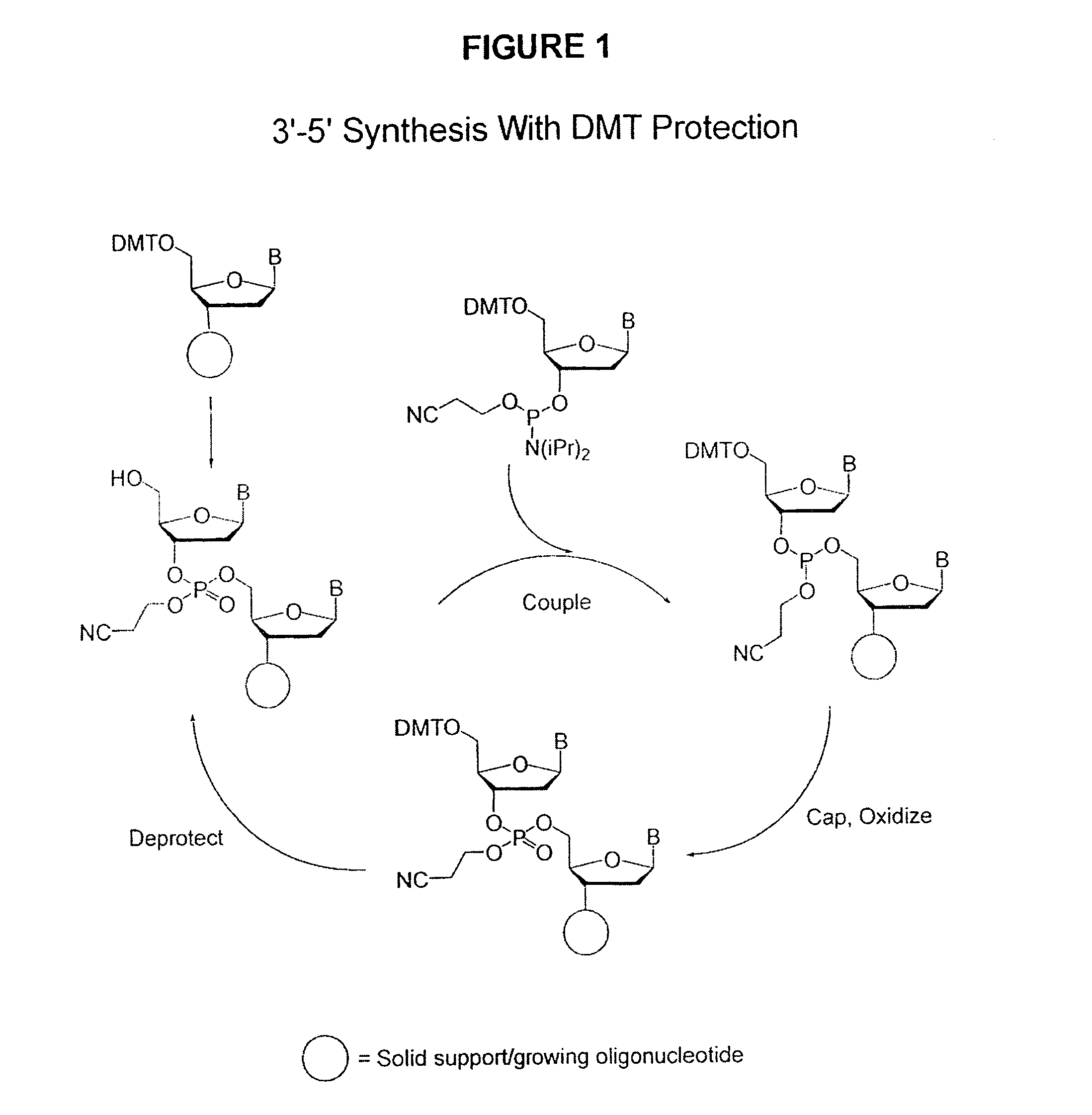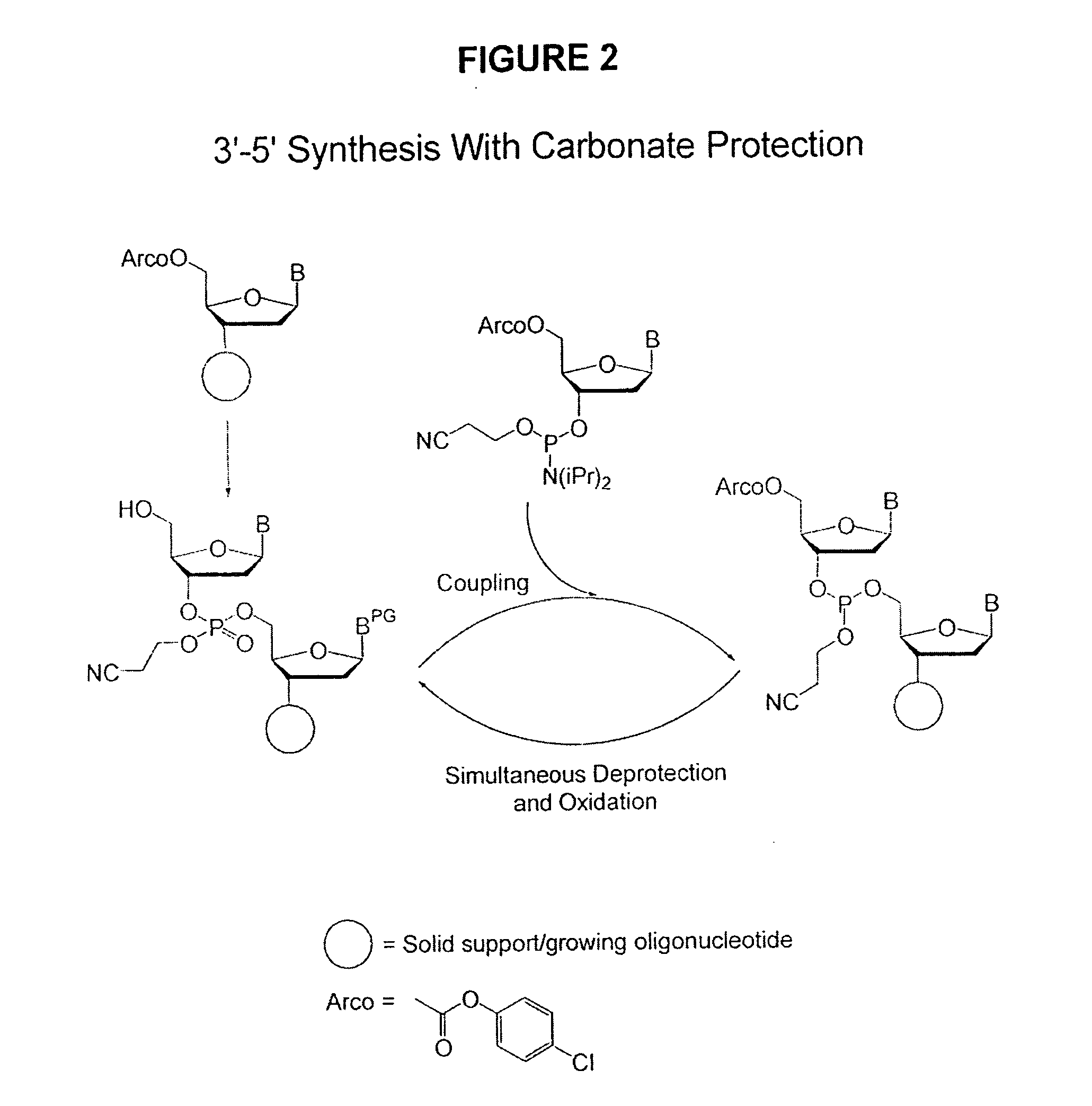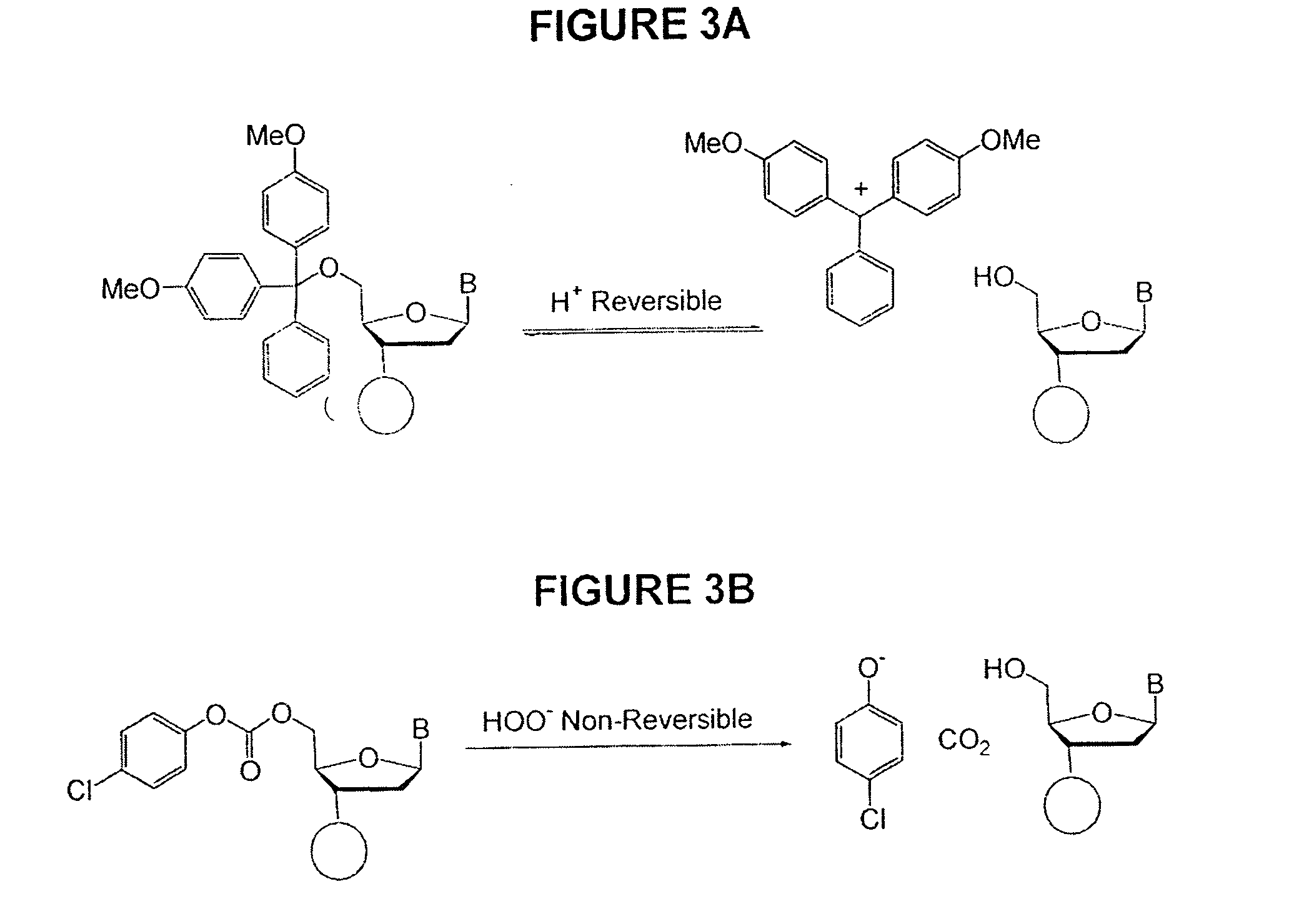Methods of synthesizing oligonucleotides using carbonate protecting groups and alpha-effect nucleophile deprotection
a technology of protecting group and oligonucleotide, which is applied in the field of nucleic acid chemistry and to the chemical synthesis of oligonucleotides, can solve the problems of substantially reducing the yield of the final olignucleotide j. w. efcavitch et al, and the use of dmt as hydroxyl-protecting group in oligonucleotide synthesis is also problem
- Summary
- Abstract
- Description
- Claims
- Application Information
AI Technical Summary
Benefits of technology
Problems solved by technology
Method used
Image
Examples
example 1
Protection and Deprotection of Deoxythymidine
[0083] (A) General Procedures:
[0084] Nuclear resonance spectra (1H, 13C and 31P NMR) were recorded on a Varian VXR-300 spectrometer. Tetramethylsilane was used as an internal reference for 1H and 13C NMR. An external capillary containing 85% H3PO4 was used as a reference for 31P NMR. Downfield chemical shifts were recorded as positive values for 31P NMR. Thin layer chromatography was performed on HF254 silica gel plates (Merck) in: CH2Cl2 / MeOH, 9:1 (Solvent A), CH2Cl2 / MeOH, 8:2 (Solvent B), ethyl acetate / THF / Et3N (45 / 45 / 10, v / v / v) (Solvent C). Pyridine, dichloromethane, and benzene were freshly distilled over CaH2. Acetonitrile was distilled over P2O5 (solid), Followed by calcium hydride, and stored over molecular sieves. Hexanes and pentanes were distilled. 5′-O-(4,4′-6-Dimethoxytrityl)-6-N-((di-N-butylamino)methylene)-2′-deoxyadenosine and 2-N-(di-N-butylamino)methylene-2′-deoxyguanosine were prepared according to published procedures...
example 2
Simultaneous Oligothymidylate Deprotection and Internucleotide Bond Oxidation by Peroxy Anions
[0114] Oligonucleotide Synthesis on Controlled Pore Glass:
[0115] Oligonucleotides were synthesized on CPG using an automated DNA synthesizer (ABI model 380A). The synthesis cycle used for 5′-DMT protected nucleoside phosphoramidites (Cycle 1) is shown in Table 4. This cycle was initially modified for the use of 5′-carbonate protected nucleoside phosphoramidites simply by substituting the alternative deprotection mixtures for the 3% TCA solution (Step 8, Table 4) and varying the exposure times. For the synthesis of longer sequences using 5-carbonate protected nucleoside phosphoramidites it was necessary to separate the deprotection mixture into a two-component system (Table 3). The separation of the deprotection mixture was accomplished using the capping ports on the synthesizer, and this necessitated elimination of the capping step from the synthesis cycle. Table 4 shows the optimized cyc...
example 3
Peroxy Anion Deprotection of 5′-O-DMT-Protected Cytosine, Adenine, Uracil, Thymidine and Guanosine Nucleosides
[0127] The unprotected heterocyclic bases cytosine and adenine are susceptible to N-oxidation by peracids and peroxides under stringent conditions, and oxidative reactions that result in ring cleavage of uracil, thymidine and guanosine in the presence of highly concentrated peroxides at elevated temperatures have been described. 5′-O-DMT-protected nucleosides, N-protected with a (di-N-butylamino)methylene group, were dissolved in deprotection mixture C and allowed to react for 24 hrs. The tritylated nucleosides were extracted from the aqueous deprotection mixture with CHCl3 and analyzed by 13C NMR and TLC. Neither formation of N-oxides nor attack at the 5,6-double bond of thymidine (leading to ring cleavage) was detected.
PUM
| Property | Measurement | Unit |
|---|---|---|
| pH | aaaaa | aaaaa |
| temperature | aaaaa | aaaaa |
| pH | aaaaa | aaaaa |
Abstract
Description
Claims
Application Information
 Login to View More
Login to View More - R&D
- Intellectual Property
- Life Sciences
- Materials
- Tech Scout
- Unparalleled Data Quality
- Higher Quality Content
- 60% Fewer Hallucinations
Browse by: Latest US Patents, China's latest patents, Technical Efficacy Thesaurus, Application Domain, Technology Topic, Popular Technical Reports.
© 2025 PatSnap. All rights reserved.Legal|Privacy policy|Modern Slavery Act Transparency Statement|Sitemap|About US| Contact US: help@patsnap.com



